Table of Contents
-
Where are you from, where did you study prior to this, and what brought you to HMS?
I spent equal time in California, Colorado, Massachusetts, and Illinois growing up. I received a Bachelor of Arts in Biology from Kenyon College, where I researched the osmoregulatory challenges mosquitoes face over their lifespan in the lab of Chris Gillen. I first came to Harvard as a part of the EXROP summer program hosted by the Howard Hughes Medical Institute (HHMI). I spent two years in Victoria D’Souza’s lab exploring the replication requirements of coronaviruses, where I became fascinated by therapeutic development and intervention. HMS has provided me with world-class training and opportunities to progress in my career as a scientist.
-
How does your research hold promise for therapeutic innovation?
My scientific interest is in the development of gene therapy to treat genetic diseases. My research holds promise in creating more efficient and specific gene therapy using adeno-associated viruses (AAV). I see a bright future in precision medicine and hope my work adds to the body of knowledge capable of increasing safety and efficacy.
-
What was your reaction when you learned you were named a Fujifilm Fellow?
I was very surprised. I did not even know I was up for the fellowship. However, looking into FUJIFILM Corporation’s role in supporting graduate-level trainees here at HMS, I am honored to be supported by such an organization.
-
Where are you from, where did you study prior to this, and what brought you to HMS?
I am from a small Connecticut town and pursued my undergraduate degree in chemistry at Bucknell University in Pennsylvania. At Bucknell, I spent four years in Rebecca Switzer’s lab investigating the effects of disease-causing mutations in DNA methyltransferase. That research experience and the mentorship of Rebecca Switzer led me to pursue graduate school in chemical biology.
-
How does your research hold promise for therapeutic innovation?
My research focuses on the protein required for brain cancer cells to survive but is not required in most healthy cells. Therefore, by developing a potent and selective inhibitor of this protein, it may be possible to kill cancer cells selectively while limiting toxicity on healthy cells.
-
What was your reaction when you learned you were named a Fujifilm Fellow?
I was very excited to hear that I was named a Fujifilm Fellow, and I am grateful for FUJIFILM Corporation and its support of the therapeutic sciences.
-
Where are you from, where did you study prior to this, and what brought you to HMS?
I grew up in India and Switzerland and graduated with honors from the University of California, Los Angeles (UCLA) with a Bachelor of Science in Molecular, Cell and Developmental Biology and a minor in biomedical research. I began my research career at UCLA in Steve Jacobsen’s Lab studying DNAJ1, a novel activator protein involved in non-canonical methylation-dependent gene expression. Over time, my research interests evolved, and I became attracted to investigating epigenetic and signaling mechanisms that drive cancer, leading to the discovery of therapeutic vulnerabilities. I joined the PhD Program in Biological and Biomedical Sciences at HMS to explore these research interests in a collaborative and cutting-edge research environment and learn from talented and innovative scientists.
-
How does your research hold promise for therapeutic innovation?
Individuals with advanced prostate cancer are treated with medical castration and hormone therapy, but most eventually develop resistance and lethal castration-resistant prostate cancer (CRPC). Thus, there is an unmet clinical need to develop more effective therapies for this disease. My research focuses on co-targeting oncogenic and epigenetic pathways in castration-resistant prostate cancer. The results will help establish a novel therapeutic drug combination for incurable CRPC and broaden our understanding of basic biological mechanisms driving cancer.
-
What was your reaction when you learned you were named a Fujifilm Fellow?
I was thrilled and honored to be chosen as a Fujifilm fellow. I am grateful that FUJIFILM Corporation has decided to support my graduate research. I think their commitment to supporting life sciences and therapeutic innovation at HMS is incredible.
-
Where are you from, where did you study prior to this, and what brought you to HMS?
I grew up in Pound Ridge, New York, before earning my undergraduate degree in biochemistry at the University of Wisconsin-Madison. During undergrad, I spent three years in Hazel Holden’s lab performing X-ray crystallography research and one year in Chad Vezina’s lab studying the onset of lower urinary tract dysfunction. Through both experiences, I developed an interest in drug discovery and rational drug design.
-
How does your research hold promise for therapeutic innovation?
In recent years, deubiquitinating enzymes (DUBs) and covalent fragment screening approaches have gained interest across academia and industry. DUBs are a key enzyme family responsible for maintaining protein homeostasis, but we currently lack the tools to study them extensively. Covalent fragment screening facilitates the unbiased discovery of novel compounds, enabling new chemotypes and binding pockets to be studied on proteins of interest.
-
What was your reaction when you learned you were named a Fujifilm Fellow?
I was surprised and honored to be selected as a Fujifilm Fellow. The financial support is invaluable to my research, and I look forward to being a part of the growing community of Fujifilm fellows!
-
Where are you from, where did you study prior to this, and what brought you to HMS?
I grew up in India and graduated with dual degrees in Biological Sciences and Electrical & Electronics Engineering from Birla Institute of Technology & Sciences, Pilani. I first came to Boston at the end of my junior year for a summer internship in the Goldberg lab at HMS. Captivated by the cutting-edge, collaborative research community, I returned to Boston next summer as a part of the Khorana Scholarship, a program co-hosted by the Indian and U.S. government. I joined the Walker lab at MIT for the summer and continued working on my master’s thesis in the Walker lab for the next year. Experiencing the immensely supportive scientific environment at Harvard and MIT motivated me to apply for graduate school here and join the Molecules, Cell, and Organisms (MCO) program at the Graduate School of Arts and Sciences, Harvard University.
-
How does your research hold promise for therapeutic innovation?
Humans, as well as other primates, possess high acuity daylight vision that is enabled due to a specialized region of the retina known as the fovea (“pit” in Latin). The fovea is located within a central region known as the macula, which is prone to degeneration as humans age, as in age-related macular degeneration (AMD). Though retinal development has been well studied, very little is known about the mechanisms that govern the development of this high acuity area (HAA). My thesis work is focused on a thorough investigation of the morphological and molecular aspects of HAA development using chicken as a model system.
-
What was your reaction when you learned you were named a Fujifilm Fellow?
I felt incredibly honored when I heard that I was selected as a Fujifilm Fellow. I am very grateful to the FUJIFILM Corporation for supporting my thesis research and for their unwavering commitment to enhancing the life sciences and therapeutic landscape.
-
Where are you from, where did you study prior to this, and what brought you to HMS?
I grew up in Thailand and New Zealand and graduated from Yale University with a Bachelor of Science in Molecular Biophysics and Biochemistry. While at Yale, I started doing biology and biochemistry research in Dr. Dieter Söll’s lab, studying the functions of tRNAs and ribosomal proteins. I also conducted bioinformatics research in Dr. Mark Gerstein’s lab on genome deconvolution methods for human brain sequencing data. As my interest in translational research grew, I joined the lab of Dr. Alexandra-Chloé Villani at Massachusetts General Hospital to study the adverse effects of cancer immunotherapy using single-cell sequencing. My combined interest in cancer immunology and sequencing technology led me to join HMS’s PhD Program in Biological and Biomedical Sciences to explore new methods to interrogate disease states and the effects of therapy in patients.
-
How does your research hold promise for therapeutic innovation?
The ability to interrogate and track different populations of immune cells and their interaction with tumor cells in cancer patients during immunotherapy is crucial for developing therapeutic strategies with durable outcomes. T cells are the immune cells most often involved in cancer-killing and long-term protection and are a major target for immunotherapy. A novel method could provide insight into the clonal evolution of tumor-specific T cells from patients during an anti-tumor response, which could help in understanding tumor-targeting and off-target mechanisms and identify new targets of tumor-killing T cells.
-
What was your reaction when you learned you were named a Fujifilm Fellow?
I am very honored to be selected as a Fujifilm Fellow alongside my talented peers. I am very grateful for the platform created by the FUJIFILM Corporation and excited to join the fellows’ community!
-
Where are you from, where did you study prior to this, and what brought you to HMS?
I grew up in a small town in southern Arizona, Rio Rico. I moved to Tucson for college, where I attended the University of Arizona (UArizona) and received my BS in microbiology. At UArizona, my research focused on identifying small molecule modulators of a protein implicated in neurodegenerative diseases under the supervision of May Khanna. For my graduate work, I wanted to join a lab where I could continue developing my biochemistry skills and work on a project with therapeutic implications in a world-class environment with supportive colleagues and mentors.
-
How does your research hold promise for therapeutic innovation?
GPCRs are at the center of key physiological activities, and elucidating new methods for targeting GPCR function can provide insight into novel therapeutics. I am focusing on developing a roadmap to modulate the activity of these receptors in specific cellular contexts only, thus decreasing unwanted effects. Establishing this pipeline will establish a highly modular toolkit that can be scaled beyond GPCRs to other therapeutically relevant receptors involved in multiple physiological roles.
-
What was your reaction when you learned you were named a Fujifilm Fellow?
It is a very humbling and exciting experience! I am very honored to have been chosen as a Fujifilm Fellow and am very excited to continue learning about the work FUJIFILM Corporation has accomplished in the biotechnology and pharmaceutical industry.
-
Where are you from, where did you study prior to this, and what brought you to HMS?
I grew up in Los Gatos, California. I did my undergraduate degree at the University of California, Berkeley (go bears!), studying genetics and plant biology with a minor in food systems. While at Berkeley, I did CRISPR protein engineering research in the labs of Jennifer Doudna and Dave Savage. The graduate student I worked with, Ben Oakes, started a company called Scribe Therapeutics, where I worked for two years post-graduation. I came to Harvard to further my scientific training and to experience the Disneyland-like biotech environment of Boston.
-
How does your research hold promise for therapeutic innovation?
Proteins are at the heart of so many recent therapeutic breakthroughs—from gene editing to cell therapies. These innovative tools have seen marked improvement through protein engineering. My research develops generalizable machine learning models to accelerate protein design for any application. While I will focus on a few specific applications during my PhD, my goal is to create tools that any protein engineer can use!
-
What was your reaction when you learned you were named a Fujifilm Fellow?
I feel very honored and grateful for FUJIFILM’s support! I am excited to continue my research amongst a fantastic group of fellows.
-
Where are you from, where did you study prior to this, and what brought you to HMS?
I grew up in Germany and graduated with a BSc and MSc degree in Molecular Biotechnology from Heidelberg University. During my studies, I was able to experience different scientific environments in Germany, while working in the Department of Applied Tumor Biology at Heidelberg University Hospital, the Department of Cellular Biophysics at the Max Planck Institute for Medical Research, and the Zeller Lab at EMBL Heidelberg.
However, I also had the opportunity to spend a year in Boston with research stays in the Naxerova Lab at Massachusetts General Hospital and the Weinberg Lab at Whitehead Institute. Experiencing the scientific communities at Harvard and MIT, has motivated me to pursue a PhD in Biological and Biomedical Sciences within the Harvard Division of Medical Sciences, where I want to continue working on my major research interest: cancer.
-
How does your research hold promise for therapeutic innovation?
As a first-year PhD student in the Biological and Biomedical Sciences Program, I am still rotating in different research labs and have not committed to joining a lab yet. However, in the future, I am interested in studying how evolutionary processes shape the development of normal tissues and tumors. In particular, I want to explore how the insights gained might be leveraged to improve patient care and develop new, early-stage therapeutic strategies.
-
What was your reaction when you learned you were named a Fujifilm Fellow?
I was excited when learning that I was named a Fujifilm Fellow and I am very grateful for the decision to support my studies and research. Fujifilm’s commitment to supporting the life sciences community at Harvard is extraordinary and helps significantly to drive forward innovative strategies aimed at addressing some of the world’s major health problems.
-
Where are you from, where did you study prior to this, and what brought you to HMS?
I am a first-generation college student from Mystic, Connecticut. I attended Boston University, where I received a B.A. in Biochemistry and Molecular Biology and an M.A. in Biotechnology in 2017. My undergraduate and master’s research was dedicated to a synthetic biology project which aimed to develop a macrophage-based delivery system of protein therapeutics to solid tumor microenvironments. After graduation, I was chosen to be a post-baccalaureate scholar at the Novartis Institutes for Biomedical Research (NIBR), which was an incredible and formative experience for me. There I worked on many projects but spent most of my time on a project that elucidated a new transcription factor’s role in the toxicity of diphtheria toxin. I have always been interested in the drug discovery and development process, but my experience at NIBR solidified my love of research and the desire for my research to be translational. With these insights, I joined the Systems, Synthetic, and Quantitative Biology PhD Program at Harvard Medical School because of the interdisciplinary, collaborative, and cutting-edge research and the community of kind and welcoming scientists!
-
How does your research hold promise for therapeutic innovation?
Chronic pain management is a significant unmet medical need due to the high prevalence and the dearth of safe and efficacious treatments. There has been limited success in developing new pain therapeutics of different drug classes or with different mechanisms of action to current standards of care. However, recently approved protein therapeutics for treating migraine, a chronic neurological condition causing painful and debilitating headaches, provide evidence for protein-based drugs as chronic pain treatments. My project in the Silver Lab aims to develop novel protein-based therapeutics to address the unmet need for chronic and inflammatory pain treatment.
-
What was your reaction when you learned you were named a Fujifilm Fellow?
I was incredibly honored when I heard that I had been named a Fujifilm Fellow! I immediately shared the great news with my biggest cheerleaders: my family. I am very thankful to FUJIFILM for the support and cannot wait to share my experience and findings with the scientific community.
-
Where are you from, where did you study prior to this, and what brought you to HMS?
I was born in Hong Kong but mostly grew up in California, which is where I also pursued my undergraduate studies at UC Berkeley. I majored in Molecular and Cell Biology and first got involved in research in Jeremy Thorner's laboratory, where I studied signal transduction mechanisms in yeast. Thanks to the encouragement of my mentors, I decided to apply to graduate school and chose to study at Harvard because of its community of cutting-edge research and supportive mentors and scientists.
-
How does your research hold promise for therapeutic innovation?
The ubiquitin-proteasome system is responsible for the degradation of unwanted or damaged proteins in the cell. A broad and diverse family of proteins called E3 ligases recognize the target protein that is to be ubiquitinated, which marks it for proteasomal degradation. Over 600 E3 ligases have been identified, however many remain enigmatic in their mode of substrate recognition. An emerging strategy in drug discovery relies on the use of small molecule ligands to recruit a therapeutically relevant protein to an E3 ligase, leading to the ubiquitination and degradation of the recruited protein, which offers advantages over classic inhibitors. My research focuses on understanding the molecular mechanism in which a novel E3 ligase gets recruited by a degrader and how that affects recruitment of substrates. By biochemically and structurally characterizing the interactions between ligase, degrader, and substrate, my research will contribute to therapeutic innovation by expanding the prospects for the design of new targeted protein degraders.
-
What was your reaction when you learned you were named a Fujifilm Fellow?
I was incredibly surprised and honored to learn that I was named a Fujifilm fellow! I've heard of the company throughout my life and it is an honor to receive support from them for my scientific research.
-
Where are you from, where did you study prior to this, and what brought you to HMS?
I grew up in Vancouver, Washington, and attended the University of Washington in Seattle where I studied microbiology and global health. During this time, I worked on a variety of research projects spanning from vegetation modeling to vaccine adjuvant production and finally to host-pathogen interactions during liver stage malaria. For my PhD, I made the move to the east coast for the cutting-edge, collaborative research being conducted at Harvard. In particular, I was drawn to the supportive scientific environment in the BPH program and its strong emphasis on translational research.
-
How does your research hold promise for therapeutic innovation?
Malaria is the third leading infectious disease killer after Covid-19 and tuberculosis, with over 200 million cases each year worldwide. It is caused by Plasmodium parasites and transmitted by Anopheles mosquitoes, and current strategies for malaria control focus on treating infected individuals with antimalarial drugs and killing mosquitoes to prevent transmission in the first place. However, growing insecticide resistance threatens the efficacy of our current vector control strategies and has contributed to a recent plateau in malaria cases after many years of progress. My project focuses on identifying parasite targets that are amenable to drug perturbation during the mosquito stages of its life cycle. This research helps us understand critical Plasmodium biology during its understudied vector stages. Moreover, the application of this novel approach would enable the development of control methods that can kill parasites within its vector, thereby preventing transmission even in areas of high mosquito insecticide resistance. This holds exciting promise for a novel way of combating one of humanity’s oldest diseases.
-
What was your reaction when you learned you were named a Fujifilm Fellow?
I was completely honored and excited to learn that I was named a Fujifilm Fellow. It is incredibly heartening to know that Fujifilm is invested not only in my thesis work, but in supporting the advancement of incredible therapeutic research broadly.
-
Where are you from, where did you study prior to this, and what brought you to HMS?
I'm originally from Princeton, New Jersey but have so far never lived anywhere for more than four years. I studied Applied Mathematics and Physics at Emory University and then transitioned into biology while working as a computational scientist at the University of California, San Francisco (UCSF) after my graduation. I came to HMS to start my PhD having become interested in pursuing biomedical research as a career from my time at UCSF.
-
How does your research hold promise for therapeutic innovation?
My research sits at the intersection of virology, genetics, and infectious disease; I currently study the ways in which host biology and genetics influence the variation we see in responses to infection. This type of research can help us understand the molecular basis of disease, how particular genetic variants might influence resistance to disease, and how the dynamics of host and viral factors determine observed clinical outcomes. Together, these findings can inspire novel therapeutics by guiding us to develop medical countermeasures that directly interfere with early molecular pathogenesis, mirror natural mechanisms of resistance which have been selected for over thousands of years, and more accurately predict disease course in the clinic.
-
What was your reaction when you learned you were named a Fujifilm Fellow?
I was quite surprised at first, as I did not know about the existence of the fellowship or that I was under consideration. But I quickly became excited as I learned about the work that Fujifilm is doing in the space of pharmaceuticals and biotechnology, and honored to have been selected.
-
Where are you from, where did you study prior to this, and what brought you to HMS?
I am a Japanese American born in New York City, but I moved to Massachusetts at a young age. I attended the University of Massachusetts Amherst (UMass Amherst) for my bachelor’s degree, where I received a dual degree in chemistry and biochemistry and molecular biology. I first discovered research in my freshman year and became fascinated with gene editing and its tremendous potential to revolutionize medicine and science. After graduating from UMass Amherst, I worked as a research technician at Massachusetts General Hospital, working on an off-target detection platform for CRISPR/Cas9, a versatile gene-editing technology that is starting to be used in the clinic. I became convinced that I wanted to pursue a PhD and develop new technologies for therapeutic use. I joined the Harvard Biological and Biomedical Sciences program because of the breadth and diversity of exciting research and the welcoming and collaborative environment.
-
How does your research hold promise for therapeutic innovation?
Retinitis pigmentosa (RP) is the most common form of inherited retinal dystrophy and affects approximately 1 in every 4,000 people. RP initially causes rod photoreceptor cell degeneration in the retina resulting in night blindness and can eventually lead to complete blindness upon cone photoreceptor cell dysfunction and degeneration. Gene replacement therapy is one promising therapeutic strategy but can be infeasible in many cases due to the genetic heterogeneity (with thousands of pathogenic mutations identified across more than 80 different genes) and because the causal mutations are not always known. One area of focus in our lab is developing generalized gene therapies that prolong cone photoreceptor cell survival regardless of genetic mutations. Our research holds great promise because a mutation-agnostic therapy will be able to treat more patients with RP and improve their quality of life.
-
What was your reaction when you learned you were named a Fujifilm Fellow?
I was extremely surprised by the news and honored to be chosen as a Fujifilm fellow. I’m very grateful to see that such a famous company is willing to invest not only in science but also in the development of researchers.
-
Where are you from, where did you study prior to this, and what brought you to HMS?
After growing up in Los Angeles, California, I moved to Pittsburgh, Pennsylvania to attend Carnegie Mellon University, where I studied biological chemistry, politics, and public policy. Inspired by the intellectual diversity of the Harvard scientific community, I chose to pursue my doctoral work in the Chemical Biology PhD Program, where I could explore my interests in therapeutic development across many techniques, disciplines, and institutional frameworks.
-
How does your research hold promise for therapeutic innovation?
Due to their pharmacological availability at the cell surface and diverse signaling capabilities, G Protein-Coupled Receptors (GPCRs) serve as the targets for roughly one-third of all FDA-approved therapeutics. My thesis work focuses on a highly unusual class of GPCRs that are responsible for cell adhesion in many biological contexts and resulting in disease states, including cancer, ADHD, and developmental disorders of the nervous system. To date, however, no drugs have been generated that target these Adhesion GPCRs. My project aims to characterize the basic mechanisms by which these receptors turn on and off, to identify potential ways to modulate their activities with novel therapeutics.
-
What was your reaction when you learned you were named a Fujifilm Fellow?
I was absolutely humbled and honored to hear that I was selected as a Fujifilm Fellow. It is immensely heartening to know that an organization of leading scientific minds and industrial leaders has chosen to put a direct stake in not only my thesis work but also my future in this amazing scientific community that I have only recently become a part of.
-
Where are you from, where did you study prior to this, and what brought you to HMS?
I grew up in Switzerland, where I completed my bachelor’s and master’s degree in Nanoscience at the University of Basel. Nanoscience is an interdisciplinary course of studies that combines biology, chemistry, and physics. During my master’s, I did several research projects in chemistry and microbiology, which further deepened my interdisciplinary background. One of these projects was in the lab of Thomas Bernhardt at Harvard Medical School. It was during this project that I got fascinated by the mechanisms behind bacterial growth and cell division. Given the thrilling experience at HMS, and the nourishing and highly collaborative environment, I decided to pursue a PhD in the Biological and Biomedical Sciences Program here at Harvard.
-
How does your research hold promise for therapeutic innovation?
The rise of antibiotic resistance makes bacterial infections harder to treat as an increasing amount of antibiotics become less effective. This leads to increased mortality, morbidity, and increased health care costs due to bacterial infections. To stop this emerging global health crisis, it is important to develop new therapeutics that are effective against antibiotic-resistant bacteria. Since bacterial cell division is an essential step in the bacterial life cycle and the mechanisms are very different from that in human cells, cell division is an interesting target for new antibiotics. Understanding the molecular mechanisms underlying bacterial cell division is crucial to find new methods for the treatment of diseases and the development of antibiotics.
-
What was your reaction when you learned you were named a Fujifilm Fellow?
I was very honored to be named a Fujifilm Fellow, and I’m looking forward to continuing my scientific endeavors as part of the Fujifilm Fellowship. I’m very grateful for FUJIFILM’s contribution towards life sciences and education.
-
Where are you from, where did you study prior to this, and what brought you to HMS?
I am from Lusaka, Zambia, and I came to the United States to pursue a higher education. I attended Paine College in Augusta, Georgia, where I studied biology. During my undergraduate training, I had the opportunity to conduct research in laboratories at my home campus, Children’s Hospital Los Angeles, and Novartis Institutes for BioMedical Research (NIBR). After graduating from college, I was selected for the Post-Baccalaureate Scholars Program at NIBR, where I studied pulmonary epithelial cell biology for two years. After two years of research experience in pulmonary biology, I decided to pursue a doctoral degree in the PhD Program in Biological Sciences in Public Health (BPH). In particular, I chose the BPH program because it offered a holistic training in biomedical research to tackle global health challenges.
-
How does your research hold promise for therapeutic innovation?
Worldwide, asthma affects more than 350 million people. While advances in diagnosis and therapeutic management have been made, asthma remains a progressive disease with no cure. Because poorly controlled asthma is significantly associated with high mortality and morbidity, developing new drugs and therapeutic strategies is readily needed.
To advance our knowledge about the cause and development of asthma and to find potential drug targets, my research focuses on the pulmonary epithelium. Under normal conditions, the pulmonary epithelium serves as a protective physical barrier. It is the first line of defense against inhaled external insults such as environmental pollutants, allergens, and viruses, all of which are major risk factors for asthma. Repeated insults could eventually damage the pulmonary epithelium, which contributes to the development of asthma. In my work, I am investigating how external stimuli, such as allergens, compromise the normal defense function of the pulmonary epithelium, contributing to the progression of asthma. Understanding the role of the airway epithelium presents potential therapeutic targets for the development of new drugs and/or new therapeutic strategies for the treatment of asthma.
-
What was your reaction when you learned you were named a Fujifilm Fellow?
I was very excited and honored to be named a Fujifilm Fellow. I am grateful for the financial support from FUJIFILM Corporation.
-
Where are you from, where did you study prior to this, and what brought you to HMS?
I was born and brought up in southwestern India and moved to the United States to pursue a master’s degree in Biotechnology from Northwestern University, located in the beautiful city of Chicago. After graduation, I worked in a viral oncology laboratory at Northwestern as a Research Technician for a few years before starting my PhD at Harvard as part of the HMS PhD Program in Virology. I chose Harvard because of its emphasis on translational research and deep expertise in the development of therapeutics, in addition to being in Boston, which has become a hub of innovation in the life sciences industry.
-
How does your research hold promise for therapeutic innovation?
Recent DNA sequencing efforts have revealed frequent perturbations in genes encoding members of the BAF complex family. We now know that dysregulation of chromatin architecture is implicated as a cause in many diseases, most prominently cancer. The overarching goal of my research is to leverage this information to gain insight into disease biology and reveal targets for therapeutic intervention. It is my hope that my work will contribute to the development of potent therapeutics to treat genetic diseases.
-
What was your reaction when you learned you were named a Fujifilm Fellow?
I am excited and honored to be named a Fujifilm Fellow. I’m thankful to FUJIFILM for their support and hope they continue doing the same to others in the future.
-
Where are you from, where did you study prior to this, and what brought you to HMS?
I am a second-year graduate student in the virology program. I grew up in Hong Kong and pursued my undergraduate studies in The Hong Kong University of Science and Technology (HKUST), where I majored in biotechnology and minored in bioengineering. I continued with a research master at The University of Hong Kong (HKU), where my research focused on understanding the lytic reactivation mechanism of Epstein-Barr virus (EBV). I joined the virology program at Harvard to continue researching on viruses because of its highly collaborative and supportive environment.
-
How does your research hold promise for therapeutic innovation?
EBV is an oncovirus that persistently infects >95% of adults worldwide. It is associated with multiple human malignancies, with nearly 200,000 cancers attributable to EBV each year worldwide. These include Burkitt lymphoma, Hodgkin lymphoma, HIV-associated lymphomas, post-transplant lymphoproliferative diseases, immune-senescence-associated lymphomas, nasopharyngeal, and gastric carcinomas. Upon infection of primary B lymphocytes, EBV enters a state of viral latency but is hardly quiescent. Rather, EBV expresses oncogenic membrane proteins, transcription factors, and microRNAs that efficiently transform resting B-lymphocytes into rapidly growing lymphoblasts. Although there has been a lot of research since its discovery, there are still many unknowns in the field. By constructing the inter- and intra- viral-host protein interactome, we could explore the functions of each of the viral proteins and understand how they lead to tumorigenesis, thus fostering the development of therapeutics against EBV-specific tumor cells.
-
What was your reaction when you learned you were named a Fujifilm Fellow?
I was very excited and honored to be named as a Fujifilm Fellow. It is very encouraging, and I am looking forward to future research experiences and to share my findings with the community.
-
Where are you from, where did you study prior to this, and what brought you to HMS?
I grew up in Hong Kong, but I spent part of my adolescence in the Netherlands. I graduated as a double major in Chemistry and English from Amherst College, where my research focused on small molecule probes to research protein tyrosine phosphatases in Anthony Bishop’s lab. I joined Harvard’s Chemical Biology PhD program to continue developing new small molecules for emerging target classes in a world-class setting with supportive, collaborative colleagues and mentors.
-
How does your research hold promise for therapeutic innovation?
Inhibiting the deubiquitinating enzymes (DUBs) offers the exciting potential to degrade pathogenic proteins as a novel therapeutic strategy. I am working on a platform that combines chemoproteomics, a novel DUB-targeting small molecule library, and orthogonal validation assays for DUB inhibitor discovery. In terms of therapeutic innovation, my work holds promise towards first-in-class DUB drugs, medicinal chemistry insights for what makes a good DUB inhibitor, as well as a generalizable chemoproteomic platform applicable to other target classes.
-
What was your reaction when you learned you were named a Fujifilm Fellow?
I was very excited and honoured to be named a Fujifilm Fellow. Fujifilm is a company I grew up with, so it was particularly encouraging to receive support from a familiar name.
-
Where are you from, where did you study prior to this, and what brought you to HMS?
I am a second-year graduate student in the Biological and Biomedical Sciences (BBS) program. I am from Tokyo, Japan, and first came to Boston in 2013 to pursue my BA/MA degree in biochemistry and molecular biology at Boston University. I worked as an undergraduate researcher for three years in the Whitty Research Group, where I deepened my interest in protein-protein interactions. With Dr. Adrian Whitty’s encouragement, I applied to the BBS program for my graduate studies. I chose to study at Harvard because of its highly collaborative environment with many talented individuals.
-
How does your research hold promise for therapeutic innovation?
I will be studying how PTEN, a phosphatase inactivated in many tumor cells, is regulated by N-terminal ubiquitination. There is currently little known about the effects of ubiquitination on structure and activity of PTEN. A deeper understanding of PTEN regulation would help guide the development of a novel PTEN-based anti-tumor therapeutics.
-
What was your reaction when you learned you were named a Fujifilm Fellow?
I was surprised for being named as a Fujifilm fellow. I am very grateful for this honor and the support from a famous Japanese company.
-
Where are you from, where did you study prior to this, and what brought you to HMS?
I grew up in Southern California and graduated from Northwestern University, where I studied Neuroscience and Biochemical Engineering. I have always been fascinated by the remarkable complexity of the brain and its control over every aspect of life. I’ve found that the neuroscience community at Harvard Medical School is rich with scientists who both share these curiosities and inspire the field at large.
-
How does your research hold promise for therapeutic innovation?
Parkinson’s disease is characterized by a progressive loss of dopamine neurons in the midbrain, resulting in a depreciation of voluntary movement control. The current therapies aim to mitigate motor deficits through global dopamine replacement, yet the role of dopamine is not completely understood on circuits modulating action selection, reward-seeking, and motivation. My research background includes investigating the role dopamine plays in guiding behavioral decisions in healthy brains to further understand the neural circuitry affected by Parkinson’s disease. Describing how different neural ensembles respond to dopamine input to produce complex behavioral sequences can uncover novel strategies for symptom management and therapeutic treatment in patients with Parkinson’s disease.
-
What was your reaction when you learned you were named a Fujifilm Fellow?
When I learned I was selected for the fellowship, I was honored to receive the support. I’m so excited to be included in FUJIFILM’s mission for advancing therapeutic science and building a collaborative scientific community.
-
Where are you from, where did you study prior to this, and what brought you to HMS?
After growing up on Long Island, New York, I attended Cornell University, where I studied Biology and minored in English and Biomedical Engineering. Hoping to pursue a career in the field of therapeutics, I decided to pursue a PhD at Harvard Medical School.
-
How does your research hold promise for therapeutic innovation?
For patients that have genetic blood diseases like sickle cell anemia or hemophilia, bone marrow transplants replace unhealthy blood stem cells with healthy blood stem cells. Great progress has been achieved in the field of gene therapy, which can correct the genetic mutations that cause diseases. However, transplants require that stem cells be removed from patients’ bone marrow so that gene therapy can be performed in a laboratory. When hematopoietic stem cells are taken out of our bodies and placed in a dish, the cells become stressed and can lose their capacity to make blood.
My thesis aims to improve transplantation by better understanding how hematopoietic stem cells respond to and survive stress. With this knowledge, strategies to cure hematopoietic diseases by gene therapy and bone marrow transplant will be more effective at normalizing patients’ blood.
-
What was your reaction when you learned you were named a Fujifilm Fellow?
When I learned that I was named a Fujifilm Fellow, I was excited to share the news with my unconditionally supportive parents and laboratory. I am so happy to be supported by Fujifilm, which shares my enthusiasm for the future of cell-based therapies.
-
Where are you from, where did you study prior to this, and what brought you to HMS?
I was born in Ecuador, but my family and I moved to the United States when I was 8 years old in search for better economic and educational opportunities. I completed my undergraduate studies at Hunter College, where I was a member of the Research Initiative for Scientific Enhancement (RISE) program. Being a RISE fellow gave me the opportunity to pursue research opportunities in biomedical sciences at Hunter College and encouraged me to pursue summer research at other institutions. As a result, I applied and was accepted to two summer internships at Harvard University. Upon the completion of my undergraduate degree, I sought out additional research opportunities in the biomedical sciences and did a two-year post-baccalaureate at Harvard University.
I decided to pursue my PhD in the Biological and Biomedical Sciences (BBS) program at Harvard Medical School because it is a welcoming setting that is devoted to cultivating an atmosphere that encourages students to think creatively and critically as they develop into independent investigators.
-
How does your research hold promise for therapeutic innovation?
There is a major need to develop drugs that target obesity and obesity-linked disorders, such as diabetes and NASH, which are leading causes of death worldwide. A well-established approach to reverse obesity is activation of calorie-burning in brown adipose tissues (BAT). BAT has the unique capacity to catabolize fat and glucose in futile thermogenic cycles that are protective against obesity. The major protein effector of thermogenesis in BAT is uncoupling protein 1 (UCP1). To date, UCP1 has been considered “undruggable,” lacking obvious modes of small molecule pharmacological engagement for therapeutic activation. My host lab recently discovered that UCP1 contains a functional cysteine residue that when post-translationally modified can increase protein activity. This newfound site represents the first known activation site of UCP1.
My research will apply new mass spectrometric and chemical technologies to identify small molecules that can modify this newfound active site on UCP1. We predict that chemical modification of this site will activate the calorie burning activity of UCP1, effectively acting as a molecular switch to drive calorie burning. These molecules could hold major promise as treatments for obesity and diabetes, where excess calories are a major driver of disease and death.
-
What was your reaction when you learned you were named a Fujifilm Fellow?
I am extremely excited for the opportunity given to me to continue working towards novel scientific discovery. I am looking forward to future scientific experiences as part of being a Fujifilm fellow and the opportunity to share my findings with the science community.
-
Where are you from, where did you study prior to this, and what brought you to HMS?
I am originally from Nanjing, China. To fulfill my passion for biology, I left my homeland and my family to study life sciences in the Netherlands (HAN University of Applied Science). As an undergraduate student, I was fascinated with induced pluripotent stem cells (iPSCs) technology due to its therapeutic potential, such as in the study of neuron degeneration diseases. To gain a better comprehension of this, I studied iPSCs technology in Dr. Niels Geijsen’s lab at the Hubrecht Institute and upper motor neuron conversion from iPSCs in Dr. Paola Arlotta’s lab (in collaboration with Dr. Fengzhang’s lab) as my undergraduate internship.
Throughout my time on both of my undergraduate internship projects, I found it fascinating how we could recapitulate what happens in a human body faithfully in a petri-dish and use it as a platform for disease mechanism discovery. I was eager to explore the research possibilities in this realm. With such a question, I was recruited by Dr. Justin Ichida, a fellow researcher from Harvard, who was starting a new lab at the University of Southern California.
In Dr. Ichida’s lab, I embarked on a five-year journey applying stem cell technologies to studying and potentially treating Amyotrophic Lateral Sclerosis (ALS). I focused on the most common genetic cause of the disease, an extended hexanucleotide GGGGCC expansion in the 72nd open reading frame on chromosome 9 (C9ORF72). After days and nights of trying to get the best motor neuron conversion, gene editing efficiency, disease-relevant stress conditions, and downstream molecular readouts, I was eventually able to show that the motor neuron degeneration in C9ORF72 type ALS patients was caused by a cooperativity between the gain-of-function from toxic aggregates and the loss-of-function from C9ORF72 gene products on protein trafficking.
The experience where I used my knowledge in stem cell biology to derive patient-specific motor neuron phenotypes for therapeutic compound high-throughput screening strengthened my belief that translational research could indeed one day provide effective therapeutic treatments. With this goal, I pursued other potential drugs for ALS. In collaboration with Dr. Berislav V. Zlokovic’s lab, I found that Active Protein C (APC), which was previously shown to block neuron apoptosis and to alleviate disease-mimicking phenotypes in rodent ALS models, rescued patient-specific motor neuron phenotypes via improving autophagosome functions.
This was an exciting time for me as I had potentially discovered a new therapeutic pathway for ALS, but the final stage of submitting my APC manuscript, I abruptly needed to travel home to China to be by my mother’s side as she went through the final stage of cancer, and sadly her life. I was so incredibly frustrated that better therapies for breast cancers are not as readily available in China as they are in the US, and that as a whole how poor the prognosis is for late-stage cancers in general. Through my angst and grief came the vivid realization and understanding of the importance of scientific research. The helplessness and frustration for my mother have transformed me in many ways. It has given me drive and purpose to apply myself in cancer research. I want to replicate the story of Herceptin. I want to make immunotherapy more individualized. I no longer want to see desperate patients. I will devote my career to the disease that took my mother away in the hope of making the prognosis better for the next patient.
Being one of the world’s leading cancer research organizations, Dana-Farber Cancer Institute has a long history of fighting cancer since 1947. Moreover, close collaboration with multiple hospitals such as Massachusetts General Hospital provides opportunities for close interactions between patients and researchers, so that the patients can benefit from the latest discoveries and innovative treatments. Overall, it is one of the best places for cancer research and it will be my great honor to further my research and study here.
-
How does your research hold promise for therapeutic innovation?
Intratumor heterogeneity is a critical obstacle to conquer when designing the most effective therapeutic strategies for patients with cancer. The poor understanding of the genotypic and phenotypic variation of different clones within one tumor can cause ineffective treatment and drug resistance. Therefore, only by well-characterizing gene mutations from each tumor clone and understanding each clone’s role in tumor formation would allow us to develop effective combination treatments to treat cancer systematically.
-
What was your reaction when you learned you were named a Fujifilm Fellow?
I cannot believe it! I learned that the Fujifilm Fellowship only provides funding to the most promising PhD students across the nine HMS-based life sciences PhD programs. I am truly honored to be selected among all of the excellent candidates.
 David Anderson
David Anderson Emma Dolen
Emma Dolen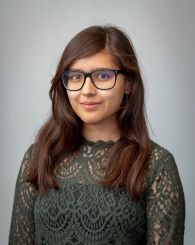 Rhea Sahu
Rhea Sahu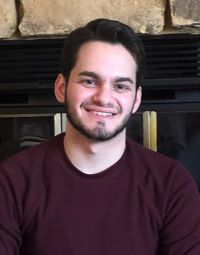 Nicholas Girardi
Nicholas Girardi Heer Joisher
Heer Joisher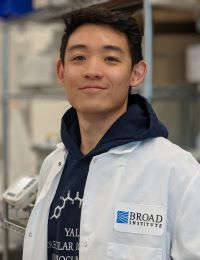 Kasidet Manakongtreecheep
Kasidet Manakongtreecheep Victor G. Miranda
Victor G. Miranda Han Spinner
Han Spinner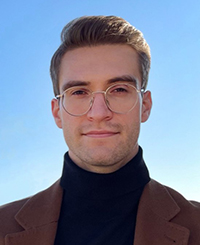 Sebastian Degner
Sebastian Degner Kailyn Doiron
Kailyn Doiron Michelle Ma
Michelle Ma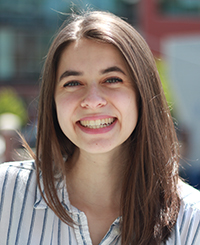
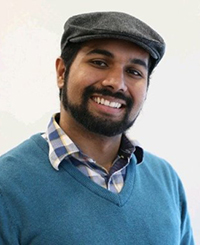 Siddharth Raju
Siddharth Raju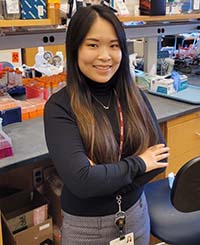 Kanae Sasaki
Kanae Sasaki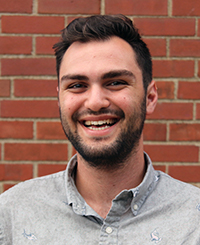 Andrew Dates
Andrew Dates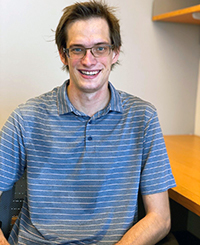 Laurent Dubois
Laurent Dubois Chimwemwe Mwase
Chimwemwe Mwase 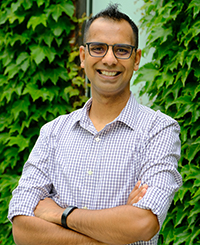 Ajinkya Patil
Ajinkya Patil Stephanie PT Yiu
Stephanie PT Yiu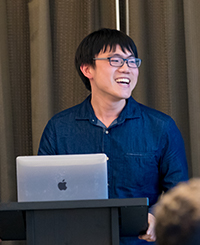 Wai Cheung (Adrian) Chan
Wai Cheung (Adrian) Chan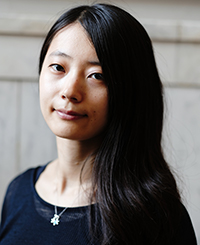 Reina Iwase
Reina Iwase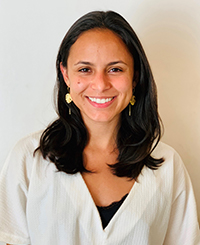 Alyssa Larios
Alyssa Larios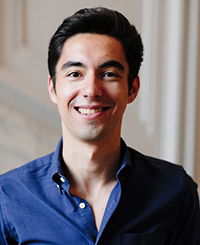 Michael Mazzola
Michael Mazzola  Martha Ordonez
Martha Ordonez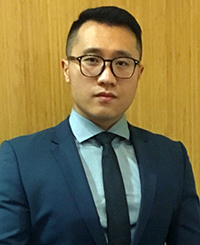 Yingxiao (TK) Shi
Yingxiao (TK) Shi